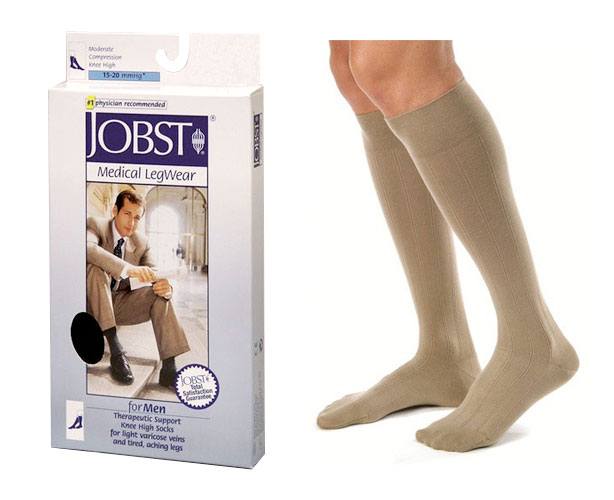
Please choose a body region on the right for you to pin point the problem area of your body.

Shop by Condition

Shop by Brand
Compression socks have become increasingly popular among athletes, travelers, and people with various health conditions. These specialized socks provide a range of benefits, including improved circulation, reduced muscle soreness, and lower risk of blood clots. But how do compression socks work? In this post, we'll explore the science behind these socks and their benefits.
Compression socks are specially designed socks that provide graduated compression to the legs. They are typically made of a stretchy fabric that fits snugly around the calf and foot. The compression level of these socks varies depending on the brand and purpose.
To encourage blood flow back up to the heart, compression socks put pressure on the muscles and veins in the legs. Gradually decreasing up the leg, this pressure is highest at the ankle and the lower leg. Blood pooling in the legs, which can result in discomfort and swelling, is lessened as a result.
Improving Circulation
One of the primary benefits of compression socks is their ability to improve circulation. By promoting blood flow, these socks can reduce the risk of blood clots, deep vein thrombosis (DVT), and varicose veins. Improved circulation can also help to reduce muscle soreness and fatigue, making these socks popular among athletes.
Reducing Swelling
Leg and foot swelling can be lessened with the aid of compression socks. These socks support circulation by exerting pressure on the muscles and veins, which helps to push extra fluid out of the body. People who spend a lot of time standing or sitting may find this to be especially helpful because these activities can lead to fluid buildup in the legs.
Managing Medical Conditions
Compression socks are often recommended for people with various medical conditions, such as lymphedema, edema, and venous insufficiency. These socks can help to manage their symptoms and prevent complications by improving circulation and reducing swelling.
When choosing compression socks, it's important to consider the compression level. The level of compression is measured in millimeters of mercury (mmHg) and ranges from 8-15 mmHg for mild compression up to 30-40 mmHg for medical-grade compression. Mild compression is typically used for preventative purposes, while higher levels are used for medical conditions.
Proper Fit
To get the most benefit from compression socks, it's important to choose the right size and fit. These socks should fit snugly but not be too tight or restrictive. It's also important to wear them properly, pulling them up evenly and avoiding wrinkles or bunching.
There are several types of compression socks available, including knee-high, thigh-high, and pantyhose. Some socks are designed for specific activities, such as running or hiking, while others are more versatile. Some socks also have additional features, such as moisture-wicking or antimicrobial properties.
To ensure that compression socks remain effective, it's important to care for them properly. These socks should be washed in cold water and hung to dry. Avoid using bleach or fabric softeners, as these can damage the elastic fibers in the socks.
While compression socks can provide many benefits, they are not appropriate for everyone. People with certain medical conditions, such as peripheral arterial disease (PAD), should avoid compression socks or use them only under medical supervision. It's also important to see a doctor if you experience any unusual symptoms like pain or swelling while wearing compression socks.
Compression socks are a valuable tool for promoting circulation, reducing swelling, and managing various medical conditions. These socks work by applying graduated pressure to the legs, helping to improve blood flow and prevent complications. To get the most benefit from compression socks, it's important to choose the right level of compression, size, and fit. Proper care of the socks, such as washing them in cold water and hanging them to dry, can also help to maintain their effectiveness. While compression socks can provide many benefits, it's important to remember that they are not appropriate for everyone. People with certain medical conditions should avoid compression socks or use them only under medical supervision. It's also important to see a doctor if you experience any unusual symptoms while wearing compression socks.
| |
|---|
 Jobst Compression Socks - For Men | Jobst |
 JOBST Compression Socks - Relief | Jobst |
| Stay Connected! | |
|
|
|
Get $10 off your next order when you sign up to receive our email newsletter.*
Simply enter your email address below!
*Minimum order value of $100. Valid email address to qualify.







